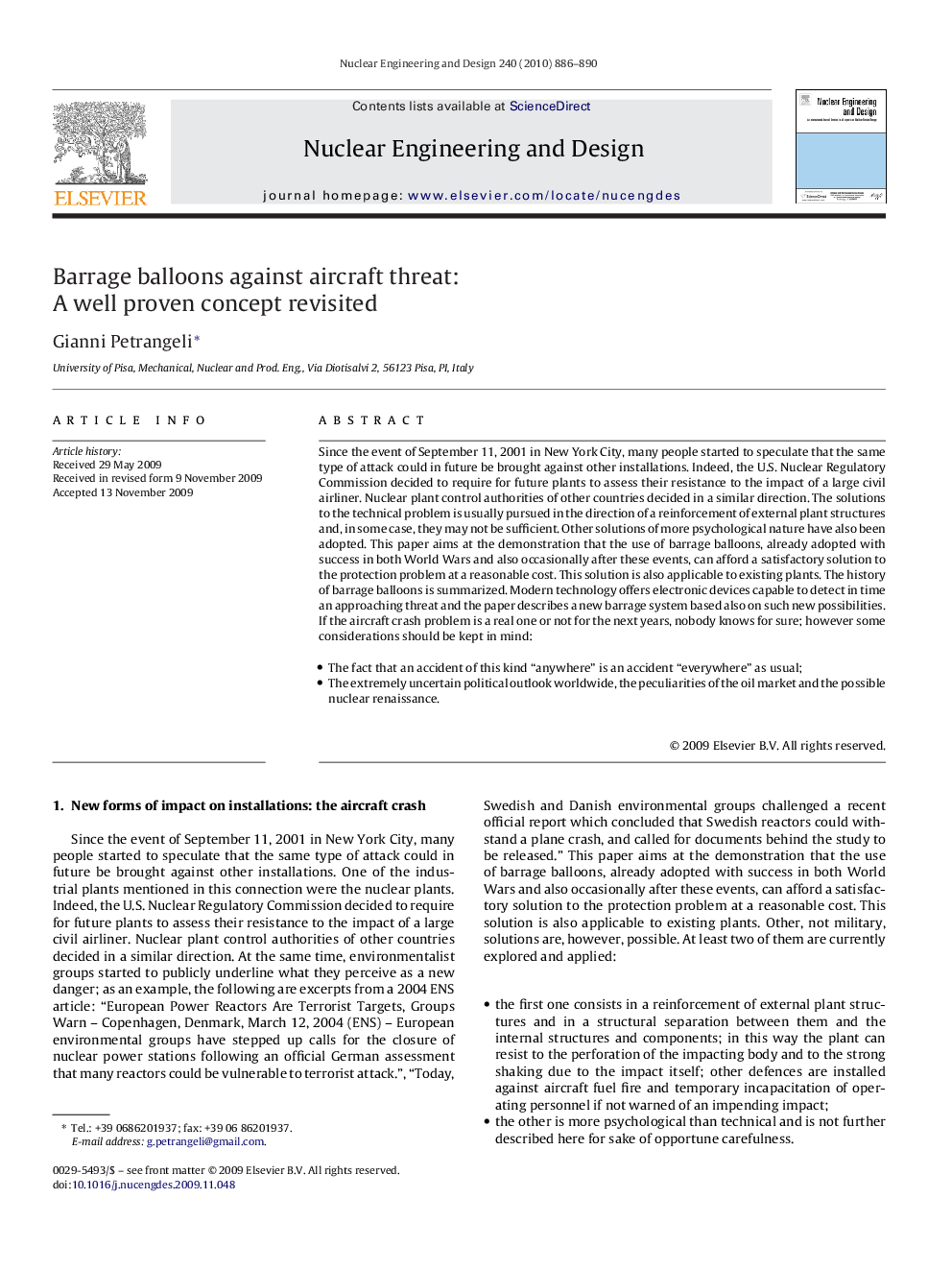| کد مقاله | کد نشریه | سال انتشار | مقاله انگلیسی | نسخه تمام متن |
|---|---|---|---|---|
| 298075 | 511774 | 2010 | 5 صفحه PDF | دانلود رایگان |

Since the event of September 11, 2001 in New York City, many people started to speculate that the same type of attack could in future be brought against other installations. Indeed, the U.S. Nuclear Regulatory Commission decided to require for future plants to assess their resistance to the impact of a large civil airliner. Nuclear plant control authorities of other countries decided in a similar direction. The solutions to the technical problem is usually pursued in the direction of a reinforcement of external plant structures and, in some case, they may not be sufficient. Other solutions of more psychological nature have also been adopted. This paper aims at the demonstration that the use of barrage balloons, already adopted with success in both World Wars and also occasionally after these events, can afford a satisfactory solution to the protection problem at a reasonable cost. This solution is also applicable to existing plants. The history of barrage balloons is summarized. Modern technology offers electronic devices capable to detect in time an approaching threat and the paper describes a new barrage system based also on such new possibilities. If the aircraft crash problem is a real one or not for the next years, nobody knows for sure; however some considerations should be kept in mind:
• The fact that an accident of this kind “anywhere” is an accident “everywhere” as usual;
• The extremely uncertain political outlook worldwide, the peculiarities of the oil market and the possible nuclear renaissance.
Journal: Nuclear Engineering and Design - Volume 240, Issue 4, April 2010, Pages 886–890